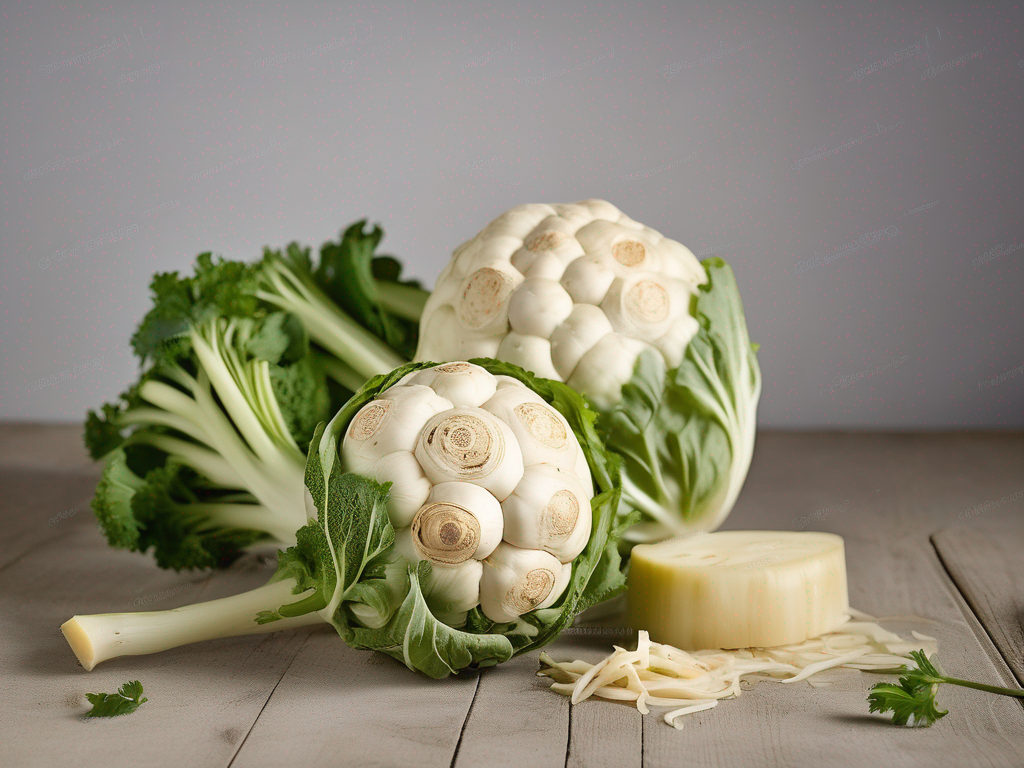
How to Prevent Celeriac from Going Bad Too Quickly
Get Your Free Food Safety Cheat Sheet
30 most common foods with instant answers. Print it and stick it on your fridge—completely free!
How to Prevent Celeriac from Going Bad Too Quickly
Celeriac, also known as celery root, is a versatile and nutritious root vegetable that is commonly used in various culinary dishes. Its unique flavor and crunchy texture make it a popular choice for salads, soups, and side dishes. However, like many other vegetables, celeriac can spoil quickly if not stored properly. In this blog post, we will explore practical tips and food safety information to help you prevent celeriac from going bad too quickly. (Celeriac)
Understanding Celeriac
Before diving into storage tips, let's take a closer look at celeriac itself. Celeriac is a member of the celery family and is prized for its distinct flavor, which is often described as a mix of celery and parsley. This root vegetable is rich in vitamins, minerals, and antioxidants, making it a healthy addition to your diet.
Celeriac can be enjoyed raw or cooked, adding a unique flavor and texture to a wide range of dishes. When selecting celeriac, look for firm, blemish-free roots with a fresh, earthy scent. Avoid celeriac that feels soft or has moldy spots, as these are signs of spoilage.
Proper Storage Techniques
Proper storage is key to extending the shelf life of celeriac and preserving its flavor and nutrients. Follow these tips to prevent celeriac from going bad too quickly:
1. Store in a Cool, Dark Place
- Keep celeriac in a cool, dark place such as the crisper drawer of your refrigerator.
- Avoid storing celeriac near fruits that produce ethylene gas, such as apples and bananas, as this can cause the vegetable to ripen and spoil more quickly.
2. Remove the Tops
- Trim the leafy tops of the celeriac before storing, as they can draw moisture away from the root and cause it to wilt.
3. Keep Moisture Levels in Check
- Celeriac prefers high humidity levels to stay fresh. Consider placing a damp paper towel around the root vegetable to maintain moisture levels.
4. Store Whole
- To prolong the shelf life of celeriac, store it whole rather than cutting it into pieces. Once cut, celeriac tends to spoil more quickly.
5. Use Proper Packaging
- Store celeriac in a perforated plastic bag or airtight container to retain moisture and prevent the vegetable from drying out.
Safety Tips
In addition to proper storage techniques, it is essential to follow food safety guidelines when handling and preparing celeriac:
1. Wash Thoroughly
- Before using celeriac, wash it under running water to remove any dirt or debris from the skin. Use a vegetable brush to scrub the surface if necessary.
2. Avoid Cross-Contamination
- To prevent the spread of bacteria, keep celeriac away from raw meat, poultry, and seafood during storage and preparation.
3. Cook to Safe Temperatures
- When cooking celeriac, ensure that it reaches a safe internal temperature to kill any harmful bacteria. Use a food thermometer to check for doneness.
Conclusion
By following these storage tips and food safety guidelines, you can enjoy fresh and flavorful celeriac for longer periods. Proper storage in a cool, dark place, removal of leafy tops, maintaining moisture levels, storing whole, and using proper packaging are key to preventing celeriac from going bad too quickly. Remember to wash celeriac thoroughly, avoid cross-contamination, and cook it to safe temperatures to ensure food safety. Incorporate celeriac into your culinary creations with confidence, knowing that you are handling it with care and expertise. Enjoy the unique flavor and nutritional benefits of this versatile root vegetable in your favorite dishes!
For more information on celeriac and other food safety tips, visit here. (Celeriac)
Related Posts
Here are some other articles you might find helpful:
Authoritative Food Safety References
These agencies and university labs inform every tip and health precaution we publish.
USDA FoodKeeper – Cold Storage Guidelines
Official refrigerator, freezer, and pantry timelines maintained by the U.S. Department of Agriculture.
Visit USDA FoodKeeperFDA Produce Safety Rule & Grower Guidance
Field-to-fridge handling practices that prevent contamination of fruits, vegetables, and leafy greens.
Visit FDA Produce SafetyCDC Foodborne Illness Prevention Hub
Surveillance-backed guidance on pathogens, symptoms, and steps to reduce foodborne illness risk.
Visit CDC Food SafetyUC Davis Postharvest Technology Center
University research detailing optimal storage atmospheres for produce after harvest.
Visit UC Davis PostharvestPenn State Extension – Home Food Preservation & Safety
Peer-reviewed extension bulletins on safe canning, chilling, and reheating practices.
Visit Penn State ExtensionGet Your Free Food Safety Cheat Sheet
30 most common foods with instant answers. Print it and stick it on your fridge—completely free! Want more? Upgrade to the complete guide with 70+ foods.
Scan your food directly and get instant safety info using our AI-powered camera feature.